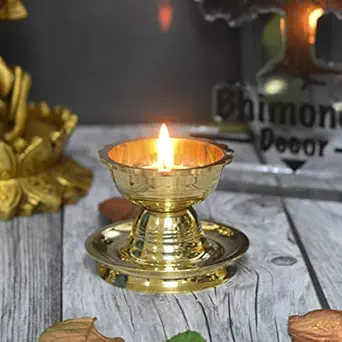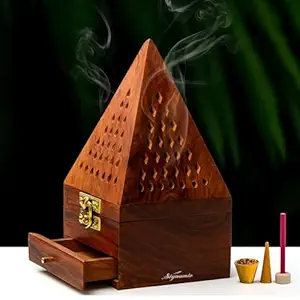હે ફૂલ ગજરો રે મારો હીર ગજરો
ગુથી લે માલણીયા મારો હાથ ગજરો …
ચામુંડમા ના કાજે લાવુ હીર ગજરો
રણચંડી ના કાજે લાવુ હીર ગજરો
ગુથી લે માલણીયા મારો હાથ ગજરો
ગુથી લે માલણીયા મારો હાથ ગજરો
હે ફૂલ ગજરો રે મારો હીર ગજરો
ફૂલ ગજરો રે મારો હીર ગજરો
ગુથી લે માલણીયા મારો હાથ ગજરો
ગુથી લે માલણીયા મારો હાથ ગજરો
પાંચાલ જાવુ મારે ચોટીલા રે ગામમા
ચોટીલા ગામના મારા ચામુંડમાના ધામમા
પાંચાલ જાવુ મારે ચોટીલા રે ગામમા
ચોટીલા ગામના મારા ચામુંડમાના ધામમા
એ લીલા પીળા ફૂલડે મઢ્યો ફૂલ ગજરો
એ લીલા પીળા ફૂલડે મઢ્યો ફૂલ ગજરો
ગુથી લે માલણીયા મારો હાથ ગજરો
ગુથી લે માલણીયા મારો હાથ ગજરો
ઉંચા કોટડા રે જવુ કાળિયા ભીલનાં ગામમા
રણચંડી રે મારા ચામુંડમા ના ધામમા
ઉંચા કોટડા રે જવુ કાળિયા ભીલનાં ગામમા
રણચંડી રે મારા ચામુંડમા ના ધામમા
ફોરમતા ફૂલડે મઢ્યો ફૂલ ગજરો
ફોરમતા ફૂલડે મઢ્યો ફૂલ ગજરો
ગુથી લે માલણીયા મારો હાથ ગજરો
હે ફૂલ ગજરો રે મારો હીર ગજરો
ફૂલ ગજરો રે મારો હીર ગજરો
ગુથી લે માલણીયા મારો હાથ ગજરો
અલ્યા ગુથી લે માલણીયા મારો હાથ ગજરો
Overview of "Ful Gajro Re Maro Heer Gajro"
Title & Meaning
'Ful Gajro Re Maro Heer Gajro' is a traditional Gujarati Garba song celebrating love, devotion, and cultural beauty.
Artist & Recording Details
This Garba has been performed by many folk artists across Gujarat, with both live and recorded versions popular during Navratri.
Genre & Occasion
It belongs to the devotional Garba and folk tradition, often sung during Navratri and festive community gatherings.
Language & Dialect
The lyrics are in Gujarati, enriched with local expressions that reflect cultural pride and devotion.
Popularity & Versions
The song enjoys immense popularity in rural and urban Gujarat, with multiple adaptations in Garba nights.
Lyrics Structure & Themes
Devotional Imagery
The lyrics use symbolic references of flowers and ornaments to honor Goddess and traditions.
Repetitive Chorus
Chorus lines enhance rhythm and allow mass participation during Garba performances.
Symbolism of Beauty
Words highlight cultural beauty, devotion, and purity, linking ornaments to spirituality.
Community Expression
The song represents collective joy and devotion expressed through Garba.
Emotional Resonance
Lyrics bring out devotion, joy, and spiritual love during the dance.
Musical & Performance Elements
Traditional Instruments
Performed with dhol, dholak, manjira, and rhythmic claps to create energy.
Tempo & Dynamics
The song starts with a steady rhythm and gradually intensifies to match Garba movements.
Live vs Studio Renditions
Live versions are extended and interactive, while studio versions are refined for recordings.
Dance Cues & Movements
Lyrics guide circular Garba steps, claps, and group synchronizations.
Audience Participation
Encourages everyone to sing, clap, and dance together in celebration.
Festival & Cultural Significance
Navratri Connection
A highlight of Navratri Garba events, symbolizing devotion and festive joy.
Spiritual Meaning
Represents love and reverence for Goddess Amba, seeking blessings through dance.
Preservation of Folk Culture
The song preserves Gujarati folk culture and passes traditions across generations.
Community Bonding
Brings people together in devotion, music, and dance during festivals.
Joyful Spirit
Creates happiness, unity, and cultural pride among participants.
How to Use & Share
Translations & Transliteration
Provide translated lyrics to help non-Gujarati devotees understand the song.
Audio / Video Embeds
Include live Garba performances and recorded audio tracks for better reach.
Printable Lyrics & PDF Downloads
Offer printable versions of the lyrics for personal and community events.
Performance Tips & Dance Guides
Provide Garba steps, costume suggestions, and rhythm guidance for performers.
SEO & Social Sharing Enhancements
Use keywords like Garba, Gujarati folk, Navratri songs, and promote via social platforms.
'Ful Gajro Re Maro Heer Gajro' is a traditional Gujarati Garba song celebrating love, devotion, and cultural beauty.
This Garba has been performed by many folk artists across Gujarat, with both live and recorded versions popular during Navratri.
It belongs to the devotional Garba and folk tradition, often sung during Navratri and festive community gatherings.
The lyrics are in Gujarati, enriched with local expressions that reflect cultural pride and devotion.
The song enjoys immense popularity in rural and urban Gujarat, with multiple adaptations in Garba nights.
The lyrics use symbolic references of flowers and ornaments to honor Goddess and traditions.
Chorus lines enhance rhythm and allow mass participation during Garba performances.
Words highlight cultural beauty, devotion, and purity, linking ornaments to spirituality.
The song represents collective joy and devotion expressed through Garba.
Lyrics bring out devotion, joy, and spiritual love during the dance.
Performed with dhol, dholak, manjira, and rhythmic claps to create energy.
The song starts with a steady rhythm and gradually intensifies to match Garba movements.
Live versions are extended and interactive, while studio versions are refined for recordings.
Lyrics guide circular Garba steps, claps, and group synchronizations.
Encourages everyone to sing, clap, and dance together in celebration.
A highlight of Navratri Garba events, symbolizing devotion and festive joy.
Represents love and reverence for Goddess Amba, seeking blessings through dance.
The song preserves Gujarati folk culture and passes traditions across generations.
Brings people together in devotion, music, and dance during festivals.
Creates happiness, unity, and cultural pride among participants.
Provide translated lyrics to help non-Gujarati devotees understand the song.
Include live Garba performances and recorded audio tracks for better reach.
Offer printable versions of the lyrics for personal and community events.
Provide Garba steps, costume suggestions, and rhythm guidance for performers.
Use keywords like Garba, Gujarati folk, Navratri songs, and promote via social platforms.


